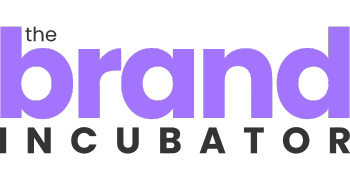Positioning is one of the most misunderstood and underutilized elements of building a powerful brand. So today, we’re cracking the code on how to position your brand for profit.
Let’s start with the basics: what exactly is brand positioning?
And how does it help me build my business?
Brand positioning is the unique space that you occupy in the mind of your customer. It’s the feeling that your customer has every time they hear about you, see you on a store shelf or in an ad, or interact with your team.
Positioning goes beyond logos and catchy headlines—it’s your way of favorably standing out to your customers. It helps you:
- Differentiate yourself from your competitors so customers choose you
- Speak to your customers in a way they understand
- Shape and influence the way people feel about your name, your product, and your reputation
The number one thing people miss when positioning their brand is consistency. Have you ever heard the phrase “confused minds don’t buy?” The same goes for brand positioning. If you’re not delivering your brand promise to customers in your communications, your marketing visuals, and your customer experience, you won’t inspire sales.
Creating a consistently strong position requires you to consider many elements of your business and brand, including:
- Audience: Clearly understand your customers' needs and preferences
- Unique Value Proposition: Define how you meet those needs and preferences differently than anyone else
- Personality: Determine which emotions and values you want your brand to evoke
- Competitive Analysis: Identify gaps in your competitor’s offerings that you can fill
- Messaging: Leverage all of the above to craft clear and consistent messaging that resonates with your audience
- Visual Identity: Create a visually appealing and cohesive identity that evokes the desired emotions and personality of your brand
When you focus on creating a consistent, cohesive, and clear brand position, you establish a unique and desirable identity that your customers recognize, understand, and love.
How do I get started?
Strong brand positioning starts with a compelling User Value Proposition (UVP). Or, more simply put, a statement that communicates all of the unique benefits and value you can provide to people who buy your product.
Your UVP should be clear, concise, and aligned with your customer’s needs and desires to be effective. Your customer should be able to read and understand your value in about 5 seconds.
Here are the four elements of an impactful unique value proposition so you can start crafting your own.
1: Headline
Focus on capturing the main transformation of your product in your headline. What is the #1 thing your customers will experience or benefit from when using your product?
2: Subhead
You can dive further into the specifics of your transformation below your headline here. Who is this transformation for? Why is this transformation impactful to them? I recommend keeping this to a single sentence—this will help you ensure you’re staying clear and concise in your language.
3: Key Benefits
What other transformational benefits are important to the customer you outlined above? List no more than 3 key benefits as bullet points that demonstrate the additional value your solution provides.
4: Visuals
90% of information transmitted to the brain is visual and visuals are processed 60,000X faster in the brain than text, making this segment of your UVP critical. Consider what imagery will help your customer understand this transformation. How will they feel once they’ve experienced it?
Once you’ve finalized your UVP, start incorporating it across all of your brand assets. From websites to print materials to social media and beyond, make sure this message is consistent every time a customer interacts with you.
ready for marketing clarity?
move your business from aimless marketing efforts to revenue-driving clarity.


